David Weinberger: “This is Rand’s final logo.”
You: “Rand? Paul Rand? I’ve never seen it before.”
David Weinberger: “Yeah, no one has.”
Well, lots of people have obviously seen it, but virtually no one knows it was designed by Paul Rand or that it was his final logo. In fact, Rand designed this logo in 1996, for a company that wouldn’t launch until 1999, three years after his passing.

In 1986, fresh out of the Army as a paratrooper, Doug Evans showed up on Paul Rand’s doorstep in Easton, Connecticut and asked to be his apprentice. Doug’s only background in the visual arts was as a graffiti artist in New York City subways during his youth but he knew he wanted to get into graphic design. He had heard and read about Rand and considered him to be the greatest designer in the world.
Rand, not quite sure what to do with Evans, tested him by having him do yard work. He soon graduated to helping find and choose props for ads and eventually, actual design, typesetting, and other production work. Doug Evans ended up working part time for Rand, contributing to work for some of Rand’s highest profile clients such as IBM, Cummins, NeXT, Enron and others. To this day, Doug is still amazed at Rand’s willingness to work with him since Rand freely and frequently told Doug that he thought he was a terrible designer. Rand even suggested Evans, who didn’t have a college education, pursue other fields.
In 1996, Evans, an avid entrepreneur, had an idea for an online print outsourcing company. He discussed the idea with Rand and, for a fee, Rand agreed to help name the company and design the identity as well. Paul Rand did not do free work for for-profit companies. It probably wasn’t full-priced though, considering the company didn’t exist yet and Doug would be doing the typesetting and mechanicals himself.
The duo started the process trying to name this yet-to-exist company. While at first, they were using names of various Greek Gods, Rand eventually decided that a new, coined name was necessary. Rand named the company, “Servador,” and apparent combination of “service” and “vendor.”
Evans swears that Rand was a joy to work with but also recalls moments of stress and tension. If Doug wasn’t a hundred percent present and prepared for meetings, he was in “deep trouble.” There were faxes at two in the morning and follow-ups at seven. One stated, “Since I haven’t heard from you, you must be either dead or indifferent.” That was sent less than a half hour after the previous one.
The entire process took about four months. The work started quickly, and was intense at times, then slowed and then quickened toward the end. Doug was allowed to give opinions although they were generally not taken into consideration.

The goal for the logo was to have a single, bold expression that would separate itself from its surroundings. Dozens of sketches were created. Rand disliked the visual combination of letters in the very name he created, so he broke the name into two lines. Usually when creating a new identity with a new name it is critical to ensure the legibility of the name. You are asking people to recognize a new brand and sometimes even learn a new word. Make it legible and don’t make them work too hard. Don’t break the word. Rand, an amazing visual communicator, sometimes did play with legibility as seen in his logos for NeXT, Okasan, as well as some of his posters and covers.
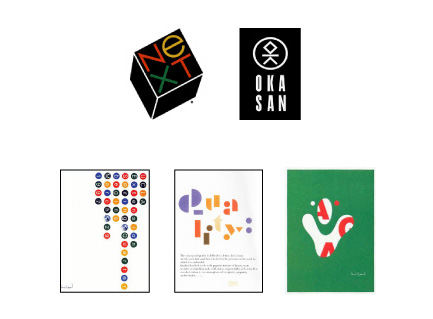
Rand strove to unite letters as well. He found unique graphic ways of bringing together letters that happen to be sitting together in a word. At that he was a master, as seen in his logos for IBM, EF and Yale University Press.

Paul Rand’s logo for Servador was simple and powerful. It was staged inside a box for impact and Rand used a shining light for the purpose of uniting the top and bottom letters. The use of Cyan, Magenta, Yellow, and Black was an obvious nod to the printing industry. As part of the original program, solid red, green, blue and gray versions were also available for use.
Paul Rand passed away in November of 1996, shortly after the design was completed. Servador is, possibly, Paul Rand’s final logo.
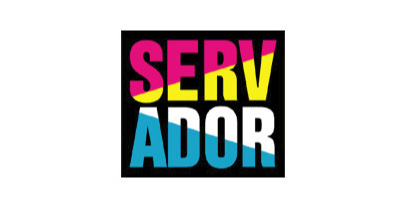
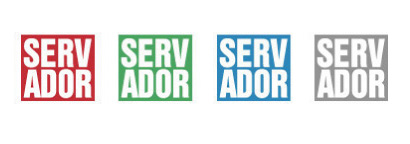
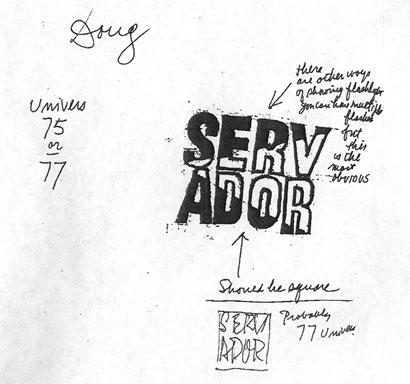

Servador launched in 1999. From the Servador’s original website: “Servador is an Internet-based, business-to-business print buying and management company that saves corporations time, resources and money off of their current print spend.”
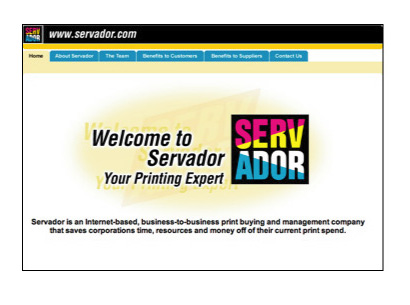
Eventually, to distance themselves from perception of the old-technology printing industry, the all-blue version was adopted as the primary logo for Servador. Even Paul Rand couldn’t escape the secret power of the Blue Square.
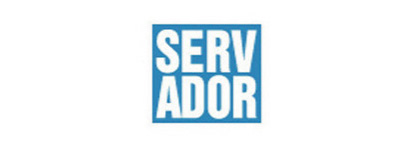
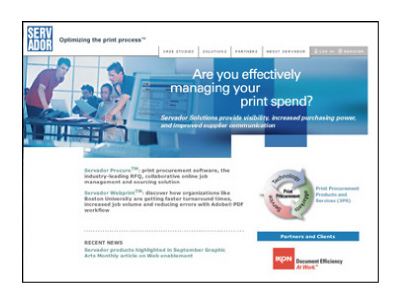
After a few years of success and partnerships with companies such as Adobe, Servador found itself in troubled times. The faltering stock market, 9/11, and increased competition all were taking their toll. Adding to its capabilities by acquisition, Servador was also trying to meet the demands of a changing business. In late 2002, a decision was made to restructure and rebrand Servador. Doug Evans would also step away from the company he built.

Doug Evans’ friend, and COO at the time, Mike Tardif was a printing industry expert who had previously set up digitally based print production departments at large advertising agencies. Tardif, given the responsibility of leading the rebranding, brought in Mark Landry, a former FutureBrand Creative Director, as the identity consultant. Mark has designed identities for Bausch & Lomb, Dex Media, GM and Tupperware as well as directing countless other identity and design programs. Coincidentally, Mark also once collaborated with Paul Rand on a project.
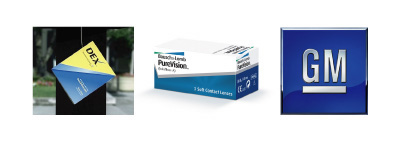
The name Printvision had already been chosen when Mark became involved. The idea was about the future of workflow management for printing needs.
From the PrintVision website: “PrintVision was founded as a print technology company dedicated to bringing internal and external visibility into print procurement. We do this by providing a software platform with a suite of products to manage all of your print needs. From desktop on-demand printing to a copy center, to the most complex commercial print buying programs, PrintVision makes the job of printing easier and cheaper.”
While Mark looked at many ways of expressing the idea, the final mark was constructed of images that were inherent in the name. The revolving paper symbolizes print management as it flows through an organization while the overall shape is both an eye and a sun, speaking to vision and vitality. Whether or not the undotted I’s are necessary, Landry has managed to get a few relevant images into a single cohesive expression.
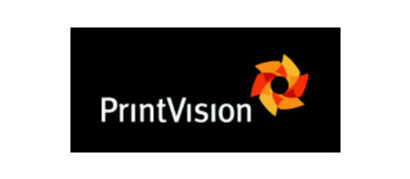
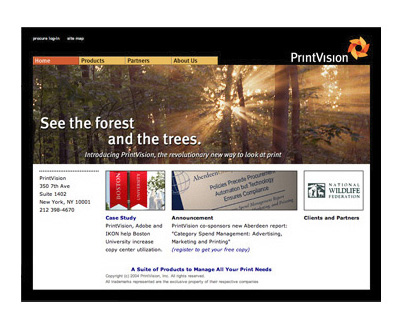

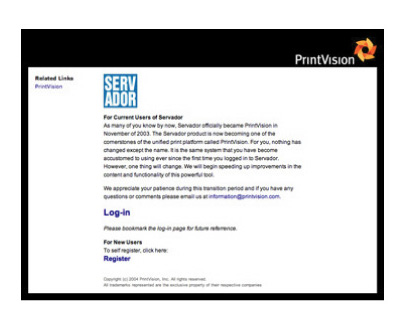
In November of 2003, Servador officially became Printvision, making not a single wave in the design community.








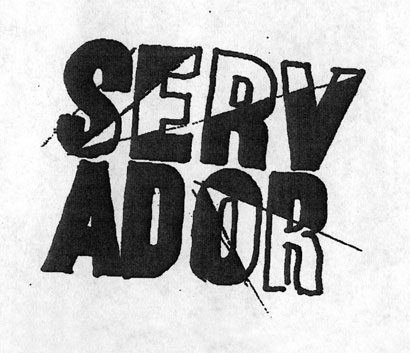
This may be the "last to launch"-- and I could be incorrect-- but wasn't his "last designed" logos actually the USSB Satellite logo and the Enron Logo (Enron developed 1996, launched 1997)?
I recall him in the bloody halls of O&M with Rick Boyko just before his death. They were building the Enron brand.
On Sep.26.2005 at 08:20 AM